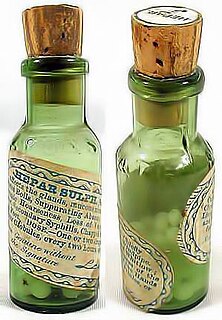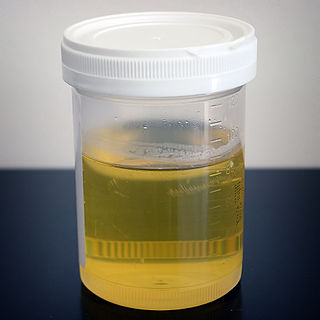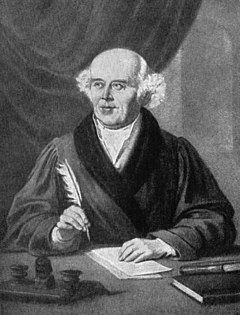
Naturopathy or naturopathic medicine is a form of alternative medicine that employs an array of pseudoscientific practices branded as "natural", "non-invasive", and as promoting "self-healing". The ideology and methods of naturopathy are based on vitalism and folk medicine, rather than evidence-based medicine. Naturopathic practitioners generally recommend against following modern medical practices, including but not limited to medical testing, drugs, vaccinations, and surgery. Instead, naturopathic study and practice rely on unscientific notions, often leading naturopathic doctors to diagnoses and treatments that have no factual merit.
Osteopathy is a type of alternative medicine that emphasizes manual readjustments, myofascial release and other physical manipulation of muscle tissue and bones. Practitioners of osteopathy are referred to as osteopaths. Its name derives from Ancient Greek "bone" (ὀστέον) and "sensitive to" or "responding to" (-πάθεια).

Quackery, often synonymous with health fraud, is the promotion of fraudulent or ignorant medical practices. A quack is a "fraudulent or ignorant pretender to medical skill" or "a person who pretends, professionally or publicly, to have skill, knowledge, qualification or credentials they do not possess; a charlatan or snake oil salesman". The term quack is a clipped form of the archaic term quacksalver, from Dutch: kwakzalver a "hawker of salve". In the Middle Ages the term quack meant "shouting". The quacksalvers sold their wares on the market shouting in a loud voice.
Allopathic medicine or allopathy is a pejorative term used by proponents of alternative medicine to refer to modern scientific systems of medicine, such as the use of pharmacologically active agents or physical interventions to treat or suppress symptoms or pathophysiologic processes of diseases or conditions. The expression was coined in 1810 by the creator of homeopathy, Samuel Hahnemann (1755–1843). Among homeopaths and other alternative medicine advocates, the expression "allopathic medicine" is still used to refer to "the broad category of medical practice that is sometimes called Western medicine, biomedicine, evidence-based medicine, or modern medicine."
A medical sign is an objective indication of some medical fact or characteristic that may be detected by a patient or anyone, especially a physician, before or during a physical examination of a patient. For example, whereas a tingling paresthesia is a symptom, erythema is a sign. Symptoms and signs are often nonspecific, but often combinations of them are at least suggestive of certain diagnoses, helping to narrow down what may be wrong. In other cases they are specific even to the point of being pathognomonic.

In alternative medicine, urine therapy or urotherapy, is the application of human urine for medicinal or cosmetic purposes, including drinking of one's own urine and massaging one's skin, or gums, with one's own urine. There is no scientific evidence to support its use.

The history of alternative medicine refers to the history of a group of diverse medical practices that were collectively promoted as "alternative medicine" beginning in the 1970s, to the collection of individual histories of members of that group, or to the history of western medical practices that were labeled "irregular practices" by the western medical establishment. It includes the histories of complementary medicine and of integrative medicine. "Alternative medicine" is a loosely defined and very diverse set of products, practices, and theories that are perceived by its users to have the healing effects of medicine, but do not originate from evidence gathered using the scientific method, are not part of biomedicine, or are contradicted by scientific evidence or established science. "Biomedicine" is that part of medical science that applies principles of anatomy, physics, chemistry, biology, physiology, and other natural sciences to clinical practice, using scientific methods to establish the effectiveness of that practice.
Anthroposophic medicine is a form of alternative medicine. Devised in the 1920s by Rudolf Steiner (1861–1925) in conjunction with Ita Wegman (1876–1943), anthroposophical medicine is based on occult notions and draws on Steiner's spiritual philosophy, which he called anthroposophy. Practitioners employ a variety of treatment techniques based upon anthroposophic precepts, including massage, exercise, counselling, and substances.
Energy medicine, energy therapy, energy healing, vibrational medicine, psychic healing, spiritual medicine or spiritual healing are branches of alternative medicine based on a pseudo-scientific belief that healers can channel healing energy into a patient and effect positive results. This idea itself contains several methods: hands-on, hands-off, and distant where the patient and healer are in different locations.

The history of chiropractic began in 1895 when Daniel David Palmer of Iowa performed the first chiropractic adjustment on a partially deaf janitor, Harvey Lillard. While Lillard was working without his shirt on in Palmers office, Lillard bent over to empty the trash can. Palmer noticed that Lillard had a vertebra out of position. He asked Lillard what happened, and Lillard replied, "I moved the wrong way, and I heard a 'pop' in my back, and that's when I lost my hearing." Palmer, who was also involved in many other natural healing philosophies, had Lillard lie face down on the floor and proceeded with the adjustment. The next day, Lillard told Palmer, "I can hear that rackets on the streets." This experience led Palmer to open a school of chiropractic two years later. Rev. Samel Weed coined the word "chiropractic" from Greek roots. Chiropractic's early philosophy was rooted in vitalism, naturalism, magnetism, spiritualism and other constructs that are not amenable to the scientific method, although Palmer tried to merge science and metaphysics. In 1896, Palmer's first descriptions and underlying philosophy of chiropractic echoed Andrew Still's principles of osteopathy established a decade earlier. Both described the body as a "machine" whose parts could be manipulated to produce a drugless cure. Both professed the use of spinal manipulation on joint dysfunction/subluxation to improved health. Palmer distinguished his work by noting that he was the first to use short-lever HVLA manipulative techniques using the spinous process and transverse processes as mechanical levers. He described the effects of chiropractic spinal manipulation as being mediated primarily by the nervous system.

Radionics is a form of alternative medicine that claims disease can be diagnosed and treated by applying electromagnetic radiation (EMR), such as radio waves, to the body from an electrically powered device. It is similar to magnet therapy which also applies EMR to the body, but using a magnet that generates a static electromagnetic field.
Yorùbá medicine, or egbo'gi, is an African system of herbalism and phytotherapy practised primarily in West Africa and the Caribbean.
"African herbal medicine is commonly called Yorubic or Orisha medicine on the African continent. It started from a religious text, called Ifa Corpus. According to tradition, the Ifa Corpus was revealed by the mystic prophet, Orunmilla, around 4,000 years ago in the ancient city of Ile-Ife, now known as major city in Yorùbáland. The last 400 years saw individuals in the Caribbean and South America practice the Yorubic healing system as a token of their past when the first wave of Stolen Africans arrived in the Americas."

Homeopathy is fairly common in some countries while being uncommon in others. In some countries, there are no specific legal regulations concerning the use of homeopathy, while in others, licenses or degrees in conventional medicine from accredited universities are required.

Trick or Treatment? Alternative Medicine on Trial is a 2008 book about alternative medicine by Simon Singh and Edzard Ernst. Singh is a physicist and the writer of several popular science books. Ernst is a professor of complementary medicine.

Traditional African medicine is an alternative medicine discipline involving indigenous herbalism and African spirituality, typically involving diviners, midwives, and herbalists. Practitioners of traditional African medicine claim to be able to cure various and diverse conditions such as cancers, psychiatric disorders, high blood pressure, cholera, most venereal diseases, epilepsy, asthma, eczema, fever, anxiety, depression, benign prostatic hyperplasia, urinary tract infections, gout, and healing of wounds and burns and even Ebola.
Navajo medicine today has remained preserved for millennia as many Navajo people have relied on traditional medicinal practices as their primary source of healing. However, modern day residents within the Navajo Nation have incorporated contemporary medicine into their society with the establishment of Western hospitals and clinics on the reservation over the last century.
Because of the uncertain nature of various alternative therapies and the wide variety of claims different practitioners make, alternative medicine has been a source of vigorous debate, even over the definition of "alternative medicine". Dietary supplements, their ingredients, safety, and claims, are a continual source of controversy. In some cases, political issues, mainstream medicine and alternative medicine all collide, such as in cases where synthetic drugs are legal but the herbal sources of the same active chemical are banned.















